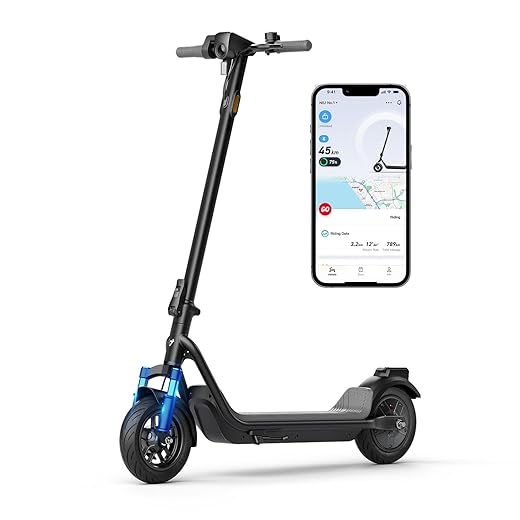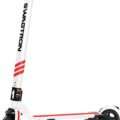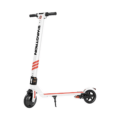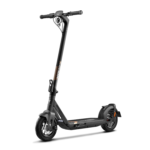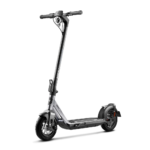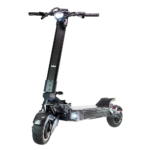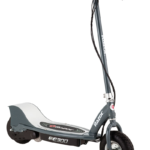- Home
- Scooters
- Compare Scooters
- Segway Ninebot MAX G2 vs NIU KQi3 Max (Commuter Heavyweights)
Segway Ninebot MAX G2 vs NIU KQi3 Max (Commuter Heavyweights)
Table of contents
- Snapshot Verdict (Skimmable)
- At-a-Glance Differences (Quick Table)
- What They Are (Positioning & Design)
- Specs & Dimensions (Full Table)
- Performance (Real-World)
- Comfort & Ride Quality
- Portability & Storage
- Battery, Charging & Range Management
- Safety, Durability & Weather
- Smart Features & App Experience
- Reliability, Maintenance & Parts
- Value & Ownership Costs
- Use-Case Scenarios (Which One Wins When…)
- Alternatives to Consider
- FAQs
- Final Verdict
- Price
Looking for a tough, reliable commuter that won’t flinch at daily miles? You’ll inevitably compare the Segway Ninebot MAX G2 vs NIU KQi3 Max. Both claim long range, calm manners, and low upkeep. However, they solve the commuter puzzle differently—one leans on suspension and traction control, while the other relies on a stiff frame and dual mechanical discs. Consequently, this guide breaks everything down in plain language so you can pick with confidence.
Specs verified: October 7, 2025 (official sources)
Snapshot Verdict (Skimmable)
Choose MAX G2 if…
- You want the smoothest ride over rough city asphalt thanks to front hydraulic + rear spring suspension.
- You value integrated turn signals, traction control, and a comfortable, planted stance at higher commuter speeds.
- Your commute stretches beyond 20 miles (32 km) round trip and you want the best range at faster paces.
Choose KQi3 Max if…
- You prefer a lighter scooter with dual mechanical disc brakes and simple, low-maintenance hardware (no suspension).
- You like wide handlebars and a stable deck for confident carving at urban speeds.
- You want strong hill performance from a 48-volt system, with a compact folded size that’s easier to live with day to day.
At-a-Glance Differences (Quick Table)
| Category | Segway Ninebot MAX G2 | NIU KQi3 Max |
|---|---|---|
| Motor (rated / peak) | 450 W / 1000 W (rear drive) | 450 W / 900 W (rear drive) |
| Battery (V / Wh) | 36 V / 551 Wh (15.3 Ah) | 48 V / ~608 Wh (≈13 Ah) |
| Claimed range | 43 mi (70 km) | 40.4 mi (65 km) |
| Real-world city pace | ~25–28 mi at 20–22 mph (40–45 km at 32–35 km/h)* | ~20–25 mi at brisk urban pace (32–40 km)* |
| Top speed (US / unlock) | ~20 mph (32 km/h) / ~22 mph (35 km/h) | ~20 mph (32 km/h) / up to ~23.6 mph (38 km/h) in some regions |
| Top speed (EU) | ~25 km/h | ~25 km/h |
| Tires | 10″ tubeless, self-sealing (jelly layer) | 9.5″ × 2.5″ tubeless, self-healing |
| Suspension | Front hydraulic + rear spring | None (tire compliance only) |
| Brakes | Front drum + rear regenerative | Dual mechanical discs + regenerative (EBS) |
| Water resistance | IPX5 (scooter body) | IP54 |
| App features | Modes, lock, traction control (TCS), ride stats; Apple Find My† | Modes, lock, ride stats, cruise control, OTA updates |
| Max rider weight | 265 lb (120 kg) | 265 lb (120 kg) |
| Weight | ~53.5 lb (24.3 kg) | ~46.3 lb (21.0 kg) |
| Charger & time | ~42 V/2.9 A; ~6 h | 48 V; ~5–8 h (region/charger dependent) |
| Anti-theft | App lock; Apple Find My† | App lock |
| Warranty (basic) | Varies by region | Varies by region |
* Real-world range depends on rider mass, speed, temperature, gradients, and tires. The figures reflect typical commuter use at brisk pace with a ~75 kg rider.
† Availability varies by market.
What They Are (Positioning & Design)
MAX G2. Segway’s long-range commuter is tuned for comfort and control. Moreover, it adds a genuine suspension package—front hydraulic plus rear spring—alongside traction control to tame slick patches. Additionally, integrated turn signals boost visibility in busy traffic. With 10-inch self-sealing tires and a sturdy rear-drive hub motor, it delivers steady traction and predictable steering. As a result, the cockpit feels clean, the latch seems robust, and the stance reads “big scooter,” which reassures riders on longer journeys.
KQi3 Max. NIU’s “power commuter” uses a stiff, no-suspension frame with wide 542 mm handlebars and a broad 6.7-inch deck. Meanwhile, the 48-volt system gives the motor snappy punch for city starts and hills. Because it runs dual mechanical discs plus regenerative braking, stopping remains strong and familiar. Furthermore, its 9.5-inch self-healing tubeless tires and careful frame tuning provide compliance without springs, thereby keeping maintenance simple and weight lower.
Specs & Dimensions (Full Table)
| Spec | Segway Ninebot MAX G2 | NIU KQi3 Max |
|---|---|---|
| Drive / Motor | Rear-hub; 450 W rated, 1000 W peak | Rear-hub; 450 W rated, 900 W peak |
| Battery | 36 V, 15.3 Ah = 551 Wh; Smart BMS | 48 V, ≈13 Ah ≈ 608 Wh; NIU ENERGY BMS |
| Controller | Not officially specified (factory limiter / app unlock) | Not officially specified (app modes available) |
| Top speed (US) | ~20 mph (32 km/h) stock; ~22 mph (35 km/h) via app unlock | ~20 mph (32 km/h) stock; up to ~23.6 mph (38 km/h) in some regions |
| Top speed (EU) | 25 km/h (15.5 mph) | 25 km/h (15.5 mph) |
| Claimed range | 43 mi (70 km) | 40.4 mi (65 km) |
| Range at max speed | ~28 mi at 20 mph; ~25 mi at 22 mph | Not officially stated; typical brisk pace ~20–25 mi |
| Tires | 10″ tubeless, self-sealing, jelly layer | 9.5″ × 2.5″ tubeless, self-healing |
| Suspension | Front hydraulic + rear spring | None |
| Brakes | Front drum + rear electronic regen | Dual mechanical discs + regen (EBS) |
| Max rider weight | 265 lb (120 kg) | 265 lb (120 kg) |
| Scooter weight | ~53.5 lb (24.3 kg) | ~46.3 lb (21.0 kg) |
| Deck (L × W) | Not officially specified; full-length footboard | ~22.4″ × 6.7″ (570 × 170 mm) |
| Handlebar width | Not officially specified | ~21.3″ (542 mm) |
| Height (unfolded) | ~49.8″ (1264 mm) | ~47.3″ (1201 mm) |
| Folded size | ~47.6″ × 22.4″ × 23.8″ | Compact; exact folded dims not officially specified |
| Water resistance | IPX5 (body) | IP54 |
| Charger | 42 V / up to 2.9 A | 48 V; typical 2–3 A depending on region |
| Charge time | ~6 hours (0–100%) | ~5–8 hours (region/charger dependent) |
| App features | Modes, lock, stats, TCS, signals; Apple Find My (market-dependent) | Modes, lock/unlock, cruise control, ride stats, OTA updates |
| Warranty basics | Region dependent | Region dependent |
Conversions: 1 mph ≈ 1.609 km/h; 1 lb ≈ 0.454 kg. Therefore, all conversions reflect the closest rounded values from manufacturer bases.
Performance (Real-World)
Acceleration (0–15 mph / 0–25 km/h).
- MAX G2 pulls smoothly and confidently from standstill. Moreover, rear-wheel traction resists spin on dusty or damp patches. Because the controller’s power curve feels progressive, you get usable thrust without jerks. In addition, Traction Control (TCS) tempers slip on slick manhole covers or painted crossings.
- KQi3 Max benefits from 48 V headroom and a 450 W rated motor that wakes up crisply. Consequently, off-the-line feel is lively and hill starts are direct. Although it lacks TCS, the rear-drive layout and tubeless rubber deliver consistent grip.
Hill climbing.
- MAX G2 handles steep grades in the low-20% range. Furthermore, it prefers steady, bike-like climbs: momentum builds early and holds under load.
- KQi3 Max often feels punchier mid-slope because of voltage overhead. As a result, it manages short, steep ramps convincingly. Over longer climbs, both will slow; however, the NIU maintains torque slightly better when pushed.
Top-speed stability.
- MAX G2 feels planted at commuter top speeds. Specifically, the long wheelbase, suspension, and reinforced stem reduce nervousness, so minor surface ripples disappear into the hardware.
- KQi3 Max tracks straight and precise—wide bars help considerably—yet, without suspension, you will feel more texture in the deck and grips over broken pavement.
Braking.
- MAX G2 pairs a front drum with strong regenerative braking at the rear. Consequently, modulation stays easy in rain, drums remain sealed from splashes, and pads don’t need periodic alignment.
- KQi3 Max uses dual mechanical discs plus regen. Therefore, stopping power is robust and lever feel is familiar to bicycle riders. You’ll periodically center calipers and check cable stretch; nevertheless, performance remains reliable and predictable.
Regenerative behavior.
Both apps let you tune ride modes; likewise, regen strength varies by mode. The MAX G2 tends toward smoother, car-like deceleration; in contrast, the KQi3 Max biases stronger mechanical action with regen as a steady supplement.
Comfort & Ride Quality
- MAX G2 is the comfort king here. Thanks to front hydraulic and rear spring suspension, sharp hits from potholes, expansion joints, and brickwork soften significantly. Additionally, self-sealing 10-inch tires add a touch more give. As a result, hand fatigue drops and deck chatter stays low even on long rides.
- KQi3 Max relies on frame tuning and 9.5″ × 2.5″ tubeless tires. Although compliance is respectable for a non-suspension scooter, sharp impacts and repeated corrugations transmit more feedback. Consequently, for smooth cities it feels great; for cracked suburbs, you’ll slow more often.
Rider fit also matters. Notably, shorter riders appreciate the KQi3 Max’s slightly lower bar height, while taller riders often prefer the MAX G2’s roomier stance and longer reach.
Portability & Storage
- Weight. The KQi3 Max is about 7 lb (≈3.2 kg) lighter. Therefore, on walk-ups and multi-modal commutes, that difference becomes noticeable quickly.
- Fold. Both use quick, secure latches. Even so, the MAX G2 is longer when folded but rolls well; meanwhile, the KQi3 Max slides into trunks or under desks more easily.
- Carry points. Each has a sturdy stem for brief carries. Nevertheless, the MAX G2’s mass still registers on stairs.
Battery, Charging & Range Management
Battery realism.
- MAX G2: With 551 Wh on a 36 V architecture, the claimed 43 mi (70 km) is achievable only at low average speeds in ideal conditions. Conversely, at brisk commuter paces (20–22 mph), factory test data aligns around ~28 mi at 20 mph and ~25 mi at 22 mph with a 75 kg rider on flat pavement.
- KQi3 Max: At ≈608 Wh on 48 V, the claimed 40.4 mi (65 km) assumes gentle speeds and favorable conditions. Consequently, typical brisk-pace commuters see ~20–25 mi, depending on mass, gradients, temperature, and wind.
Charging.
- MAX G2: Around 6 hours with the stock ~42 V / 2.9 A charger.
- KQi3 Max: ~5–8 hours depending on the regional charger and mains voltage.
Range tips (both models).
First, keep speeds moderate in headwinds. Second, use gentler modes in cold weather. Third, avoid frequent full-throttle sprints. Additionally, store at ~50–70% state of charge for longer periods, and charge soon after wet rides so components dry in a warm environment.
Safety, Durability & Weather
- Weather protection. The MAX G2 holds IPX5 for the body; meanwhile, the KQi3 Max lists IP54. Thus, both resist light rain and splash, yet neither suits prolonged downpours, submersion, or power-washing.
- Lighting & visibility. Both include bright headlights, tail/brake lights, and reflectors. Furthermore, the MAX G2 adds integrated turn signals that materially improve communication in traffic.
- Hardware longevity. The MAX G2’s drum brake resists contamination; conversely, the KQi3 Max’s discs are easy to service and tweak. In addition, tubeless self-sealing tires on both reduce downtime from small punctures.
- Wet-braking. Drums keep grit out; discs keep modulation crisp. Even so, both benefit from cautious distances in heavy spray.
Smart Features & App Experience
- MAX G2: Modes, walk/park features (in some regions), ride stats, traction control, and turn signals control. Moreover, Apple Find My support exists in select markets; the standard app lock adds basic theft deterrence.
- KQi3 Max: Modes, cruise control, ride statistics, smart lock/unlock, and OTA updates. Likewise, the app manages speed caps in regions that allow unlocks above 20 mph.
Pairing is straightforward on both. Additionally, permissions include Bluetooth and (optionally) location for anti-theft features.
Reliability, Maintenance & Parts
- Routine checks. Tighten stem hardware periodically, inspect axle nuts, and monitor tire pressures. Consequently, you’ll prevent creaks and maintain steering precision.
- Brakes. MAX G2 drums are largely set-and-forget; regen reduces wear. KQi3 Max discs require pad checks and occasional caliper centering; however, parts are common and inexpensive.
- Tires. Both use tubeless self-sealing designs that resist punctures. Even so, carry a compact plug kit for larger punctures.
- Parts & service. Both brands operate established service networks and publish manuals. Therefore, batteries, controllers, throttles, and displays remain model-specific but obtainable.
Value & Ownership Costs
- MAX G2 delivers standout ride comfort, safety signaling, and traction aids. Admittedly, you pay slightly in weight; nevertheless, you gain range and composure.
- KQi3 Max keeps costs down over time with simple hardware (no shocks to service) and fewer heavy parts. As a result, the 48 V system and dual discs feel “serious commuter” without tipping into heavyweight territory.
Because neither brand leans on exotic parts, consumables stay affordable and widely stocked.
Use-Case Scenarios (Which One Wins When…)
- 8–12 mile daily city commute with mild hills
Winner: Tie (slight lean MAX G2) — The Segway’s suspension keeps you fresher; meanwhile, NIU’s 48 V punch is great for hills. - Wet climate with frequent puddles
Winner: MAX G2 — IPX5 body rating, sealed drum, and TCS provide an edge on slick mornings. - Rough asphalt and expansion joints
Winner: MAX G2 — Suspension + 10″ self-sealing tires reduce hand and foot fatigue noticeably. - Mixed bus/metro + walk
Winner: KQi3 Max — Lower weight makes stairs and transfers less punishing; consequently, it suits multi-modal routines. - Rider 200–265 lb (90–120 kg)
Winner: Tie — Both rate to 265 lb. The MAX G2’s chassis feels roomier; however, the KQi3 Max’s 48 V system keeps acceleration lively. - Night riding with poor street lighting
Winner: MAX G2 — Integrated turn signals improve communication; both provide strong headlights.
Alternatives to Consider
- Segway Ninebot MAX G30 – Proven long-range classic if you find a good unit.
- NIU KQi3 Pro – Lighter sibling with slightly less battery.
- Segway Ninebot F2 Pro – Sportier handling with turn signals.
- Apollo Go – More performance-oriented commuting, different price tier.
- Hiboy S2 Pro – Budget commuter baseline (fewer refinements).
FAQs
Which is faster out of the box?
In many US regions both cap near 20 mph (32 km/h). However, some markets allow the KQi3 Max to unlock higher (up to ~23.6 mph, 38 km/h), while the MAX G2 typically unlocks to ~22 mph (35 km/h). Always follow local laws.
Which has better brakes?
KQi3 Max offers dual mechanical discs plus regen—excellent bite and modulation. Meanwhile, MAX G2 uses a front drum and regen—sealed, consistent, and low-maintenance. Both stop confidently when maintained.
Which one climbs better?
Both handle short, steep ramps well. Nevertheless, the KQi3 Max benefits from a 48 V system that maintains torque, while the MAX G2’s rear drive and traction control manage grip on slick inclines.
Which rides smoother?
MAX G2, thanks to front hydraulic + rear spring suspension and 10-inch self-sealing tires.
Which is easier to carry?
KQi3 Max by roughly 7 lb (≈3.2 kg)—noticeable on stairs and transit. Consequently, it fits multi-modal life better.
Which lasts longer per charge at a brisk pace?
MAX G2 typically goes farther at 20–22 mph, owing to efficiency and battery tuning. The KQi3 Max is close but ends a bit sooner at equal speeds.
Can I ride them in the rain?
Light rain and splashes, yes—IPX5 (MAX G2) and IP54 (KQi3 Max). However, heavy rain, standing water, or washing with pressurized jets should be avoided on both.
Do they lock?
Yes. Both offer app-based locks that add deterrence. Additionally, the MAX G2 supports Apple Find My in select markets.
Final Verdict
Both scooters are excellent daily commuters, yet they deliver different strengths. The Segway Ninebot MAX G2 is the comfort-first long-ranger: it rides smoother, communicates better in traffic with built-in turn signals, and hangs onto traction on poor surfaces. Meanwhile, the NIU KQi3 Max counters with a lighter chassis, wide-bar precision, dual disc braking, and a punchy 48-volt feel that’s fun and effective.
Bottom line: Choose Segway Ninebot MAX G2 if you prioritize range at speed, comfort, and all-weather composure. Choose NIU KQi3 Max if you prioritize lighter weight, dual discs, and a crisp 48 V punch. Therefore, match the choice to your route, surfaces, and carrying needs.
Price
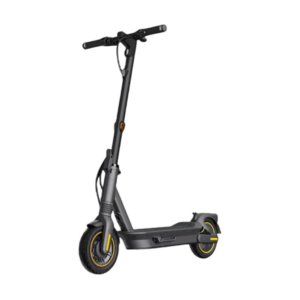 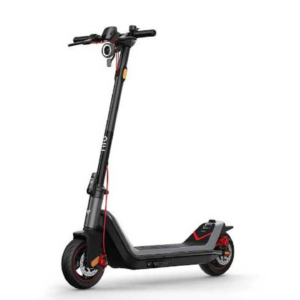 | |
| Price | |
| Our Rating | |
| Brand | SegwayNIU |
| Category | Electric ScootersElectric Scooters |
General
| Model The Model specifies the exact version or name of the scooter. It helps identify its unique design, features, and specifications within the manufacturer’s product line. Knowing the model makes it easier to compare options, find compatible accessories, or look up support information. | Ninebot MAX G2KQi3 Max |
| Brand The Brand identifies the manufacturer or company that designs and produces the scooter. A trusted brand is a sign of quality, reliability, and good customer support. Well-known brands often have higher standards for safety, performance, and after-sales service, giving you more confidence in your purchase. | SegwayNIU |
| Release Date The Release Date indicates when the scooter model was officially launched on the market. This helps you know how current the design, technology, and features are. A newer release date often means updated components, improved performance, and the latest safety or smart features. | 01 January 202301 January 2022 |
| Recommended Age Recommended Age indicates the minimum age range that the scooter is designed for, based on safety, size, and ease of use. Following the recommended age helps ensure that riders can handle the scooter’s speed, weight, and controls comfortably and safely. Always check local laws and use protective gear, especially for younger riders. | 14+14+ years |
Performance & Power
| Motor Power (Wattage) What it means: The motor power, measured in watts (W), shows how strong the scooter’s electric motor is. Why it matters: Higher wattage usually means better acceleration, more torque, and improved performance on hills or rough terrain. For example, a 250W motor is good for flat city roads and light riders, while a 500W or 1000W motor provides more power for faster speeds or climbing steep inclines. | 450 W nominal, 900–1000 W peak450 W nominal, up to 900 W peak |
| Top Speed The Top Speed indicates the maximum speed that the scooter can reach under optimal conditions. It’s usually measured on level ground with a fully charged battery and an average rider weight. A higher top speed allows you to travel longer distances faster, but always ensure you ride within legal speed limits and your personal comfort zone for safety. | Up to 22 mph (25 km/h)32 km/h (~23.6 mph) when unlocked via app; 20 mph default |
| Battery Capacity Battery Capacity refers to the total amount of energy the scooter’s battery can store, usually measured in ampere-hours (Ah) or watt-hours (Wh). A higher battery capacity means you can ride longer distances on a single charge, reducing the need for frequent recharging. Keep in mind that actual range can vary depending on rider weight, terrain, speed, and weather conditions. | 36 V, 15.3 Ah (551 Wh)608 Wh (48 V, 12.7 Ah) |
| Estimated Range per Charge The Estimated Range per Charge indicates the average distance the scooter can travel on a single full battery charge. This range is calculated under optimal conditions, such as flat terrain, moderate speed, and average rider weight. Real-world range may vary depending on riding style, terrain, weather, and load. A longer range means fewer recharges and greater freedom for longer trips. | Up to 43 miles (70 km theoretical, ~25 miles at max speed)65 km (40 miles) claimed; ~24 miles (38 km) real-world |
| Hill Climb Ability Hill Climb Ability describes the maximum incline or slope that the scooter can handle while maintaining stable performance. It’s typically expressed as a percentage or in degrees. A higher hill climb rating means the scooter can tackle steeper hills without losing too much speed or power. Actual climbing performance may vary based on rider weight, battery charge, and terrain conditions. | Up to 22% inclineUp to ~25% gradient |
| Drive System The Drive System refers to how power from the motor is delivered to the wheels. Electric scooters typically use either a hub motor (directly integrated into the wheel) or a chain/belt drive system. A high-quality drive system ensures smooth acceleration, efficient power transfer, and low maintenance. The choice of drive system affects performance, noise level, and overall ride experience. | Rear-wheel hub motorRear‑wheel hub motor |
Charging & Electrical
| Charging Time Charging Time indicates how long it takes to fully recharge the scooter’s battery from empty to 100% using the standard charger provided. Faster charging means less downtime and more time on the road. Actual charging time may vary slightly depending on battery capacity, charger output, and environmental conditions. | Approx. 5–6 hours~8 hours with 108 W charger |
| Battery Type Battery Type refers to the specific technology used in the scooter’s battery, which affects performance, lifespan, weight, and charging time. Most modern electric scooters use high-quality lithium-ion (Li-ion) batteries because they offer a good balance of energy density, durability, and low maintenance. A reliable battery type ensures consistent power delivery and longer riding ranges. | Lithium-ion with smart BMS48 V lithium-ion with Smart BMS 7th Gen |
| Removable Battery A Removable Battery means the battery pack can be easily detached from the scooter for convenient charging and replacement. This feature allows you to charge the battery separately, swap it with a spare for extended range, or securely store it indoors in extreme weather. Removable batteries add flexibility and make it easier to keep your scooter powered up wherever you are. | NoNo |
| Regenerative Braking Regenerative Braking is an energy-saving feature that converts some of the energy normally lost during braking back into battery power. When you slow down or brake, the motor works in reverse to generate electricity, which helps extend the scooter’s range and improves overall efficiency. This system also reduces wear on traditional brake components, leading to lower maintenance over time. | YesYes |
| Lighting Lighting refers to the built-in front and rear lights that enhance visibility and safety when riding in low-light conditions or at night. Good lighting helps you see the road ahead and ensures that other road users can see you. Many scooters include LED headlights, taillights, and sometimes brake lights or side reflectors for added safety and compliance with local traffic regulations. | Front LED headlight, rear LED taillight, integrated turn signalsFront LED halo, rear brake light; no built-in turn signals; includes mechanical bell and reflectors |
Build & Dimensions
| Scooter Weight Scooter Weight refers to the total weight of the scooter when fully assembled, including the battery. This affects how easy it is to carry, lift, and store the scooter when not in use. A lighter scooter is more portable and convenient for commuting, especially if you need to carry it upstairs or onto public transport. Keep in mind that a sturdy frame and quality components may add to the weight but also contribute to better durability and ride stability. | Approx. 53.5 lb (24.3 kg)~21 kg (46.3 lb) |
| Maximum Rider Weight Maximum Rider Weight indicates the highest rider weight that the scooter is designed to safely support while maintaining optimal performance and stability. Staying within this limit helps ensure reliable acceleration, braking, and climbing ability, and it protects the frame, suspension, and motor from excessive strain. Exceeding the recommended limit may reduce performance and increase wear on components. | 265 lb (120 kg)up to 120 kg (265 lb) |
| Deck Size Deck Size refers to the dimensions of the scooter’s standing platform. A wider and longer deck provides more foot space, allowing you to stand comfortably and adjust your stance while riding. A well-sized deck improves balance and stability, especially on longer rides or at higher speeds. Compact decks, on the other hand, help keep the scooter lightweight and portable. | 180 mm wide footboard, non-slip finishWide rubber-grip deck (~22.4 × 6.3 in / ~57 × 16 cm) |
| Handlebar Height Handlebar Height refers to the distance from the deck to the handlebars, which affects your riding posture and comfort. An appropriate handlebar height helps you maintain good balance, reduces strain on your back and arms, and makes steering more comfortable. Some scooters have adjustable handlebars to fit riders of different heights, while others have a fixed height for a streamlined design. | Approx. 40.9″ from deckFixed; wide (~54 cm / 21.3 in) handlebar |
| Folding Mechanism The Folding Mechanism describes how easily and securely the scooter can be folded for carrying and storage. A well-designed folding system lets you quickly collapse the scooter into a compact size, making it convenient to transport on public transit, store under a desk, or fit into a car trunk. Look for sturdy latches and safety locks to ensure the scooter stays firmly in place when folded or unfolded. | YesYes |
| Dimensions Folded Dimensions indicate the size of the scooter when it’s fully folded. This measurement shows how much space the scooter will take up when stored or carried, making it easier to check if it will fit in your car trunk, under a desk, or in a closet. Compact folded dimensions are ideal for commuters who need to bring their scooter on public transport or store it in tight spaces. | 1210 × 570 × 605 mmApproximately 45.5″ × 21.3″ × ~19.8″ (with flat folded stem) |
| Material Material refers to the primary construction materials used for the scooter’s frame and key components. High-quality materials like aircraft-grade aluminum, reinforced steel, or durable composites provide strength, stability, and a lighter overall weight. A sturdy material ensures the scooter can handle daily wear and tear while maintaining safety and performance. | High‑strength steel frameAerospace-grade aluminum frame |
Safety & Control
| Brake Type(s) Brake Type(s) describe the braking systems the scooter uses to help you slow down or stop safely. Common brake types include mechanical brakes (like drum or disc brakes), electronic brakes, and foot brakes. Many scooters combine multiple braking systems for added safety and shorter stopping distances. The type and quality of brakes affect your control, especially when riding at higher speeds or on slopes. | Front drum brake + rear electronic brake (E‑ABS)Dual front and rear disc mechanical brakes plus electronic rear regen brake |
| Suspension Suspension refers to the system that absorbs shocks and vibrations while riding, providing a smoother and more comfortable ride over uneven or rough surfaces. Scooters may have front suspension, rear suspension, or dual suspension for better shock absorption and stability. Good suspension helps reduce rider fatigue and improves control, especially when riding on bumpy roads or off-road paths. | Hydraulic front suspension and rear dual spring suspensionNone; relies on large tubeless tires and rigid frame |
| Tire Type Tire Type refers to the kind of tires the scooter uses, which directly affects ride comfort, traction, and maintenance. Common types include solid (airless) tires, pneumatic (air-filled) tires, or hybrid options. Pneumatic tires offer better shock absorption and a smoother ride on rough surfaces, while solid tires are puncture-proof and require less upkeep. The right tire type helps ensure safe handling and a comfortable ride in different conditions. | 10″ self-sealing tubeless pneumatic tires with jelly layer9.5″ tubeless pneumatic, air-sealed |
| Tire Size Tire Size indicates the diameter and width of the scooter’s tires, which affect ride comfort, stability, and how well the scooter handles different terrains. Larger tires generally offer better shock absorption and a smoother ride over bumps and rough surfaces, while smaller tires keep the scooter lighter and more portable. Choosing the right tire size helps ensure a balance between agility and comfort. | 10 inches front & rear9.5″ × 2.5″ (~241 × 64 mm) front & rear |
| Kickstand The Kickstand is a built-in stand that allows you to park your scooter upright when it’s not in use. A sturdy kickstand keeps the scooter stable and prevents it from tipping over, protecting it from scratches and damage. It also makes storing and accessing your scooter more convenient, whether you’re at home, work, or on the go. | YesYes |
| Water Resistance Rating Water Resistance Rating indicates how well the scooter is protected against water and moisture, usually shown as an IP (Ingress Protection) rating. This rating helps you understand whether the scooter can handle light rain, splashes, or wet roads without damage. While most scooters are not fully waterproof, a good water resistance rating adds peace of mind when riding in changing weather conditions. Always avoid deep puddles or submerging the scooter to protect its electrical components. | IPX5 for scooter body; IPX7 battery packIP54 (splash and dust resistant) |
Features & Extras
| Display/Console The Display (or Console) shows important real-time information about your ride, helping you monitor your scooter’s status at a glance. Typical displays show speed, battery level, distance traveled, and riding mode. Some models also include additional features like Bluetooth connectivity, app integration, or backlighting for better visibility at night. A clear and easy-to-read display enhances safety and convenience on every trip. | Full-color LED dashboard (speed, battery, modes, turn indicator, connectivity)LED dashboard shows speed, battery, and mode; includes mechanical bell |
| Ride Modes Ride Modes refer to the different speed and power settings you can choose to match your riding style or road conditions. Common modes include eco for maximum range and energy efficiency, standard for everyday balance, and sport or turbo for higher speed and stronger acceleration. Switching between ride modes allows you to customize performance, conserve battery, and ride safely in various environments. | Eco, Drive, Sport, S+; plus Walk & Park modesFour modes: E‑Save, Sport, Custom, Pedestrian; plus app-enabled cruise control |
| Smart App Connectivity Smart App Connectivity lets you pair your scooter with a dedicated mobile app via Bluetooth. Using the app, you can monitor real-time ride stats like speed, battery level, and range, adjust settings such as ride modes or cruise control, lock the scooter for added security, and sometimes receive firmware updates. This feature adds convenience and allows you to personalize your riding experience right from your smartphone. | YesYes |
| Anti-Theft System The Anti-Theft System helps protect your scooter from unauthorized use or theft. This feature can include built-in alarms, electronic motor locks, GPS tracking, or remote locking through a mobile app. A good anti-theft system provides peace of mind when parking your scooter in public spaces, adding an extra layer of security to safeguard your investment. | App‑activated horn alarm, Find My featureApp-based lock and ride alerts (no NFC unlocking) |
| Cruise Control Cruise Control allows you to maintain a steady speed without continuously holding the throttle. This feature makes longer rides more comfortable by reducing hand fatigue and providing a smoother, more relaxed riding experience — especially on flat, open roads or bike lanes. For safety, cruise control can usually be easily activated or deactivated while riding. | YesYes |
| Accessories Included Accessories Included lists the additional items that come with the scooter to enhance your riding experience and convenience. Common accessories may include a charger, kickstand, bell, lights, phone holder, or carrying strap. These extras add value by making your scooter safer, easier to use, and ready to ride straight out of the box. | Press-bell, app connectivity, reflectors, charger, user manualCharger, manual, bell, reflectors |
Warranty & Compliance
| Warranty Period The Warranty Period indicates how long the manufacturer guarantees the scooter against defects in materials and workmanship under normal use. A good warranty provides peace of mind, showing the brand’s confidence in its product quality. Always check what parts are covered, such as the frame, battery, and motor, and follow the maintenance guidelines to keep your warranty valid. | Typically 24 monthsTypically 24 months (US/EU regions) |
| Certifications Certifications confirm that the scooter meets specific safety, quality, and environmental standards set by recognized organizations or regulatory bodies. Common certifications may include CE, RoHS, UL, or other local compliance marks, depending on your region. These certifications ensure that the scooter is manufactured to high standards and is safe and legal to use in your country. | UL 2272 certified by TÜV Rheinland; E-MARK reflectors compliant with EU standardsUL‑2272, CE; IP54 water/dust protection |
 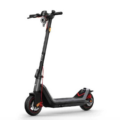 |


